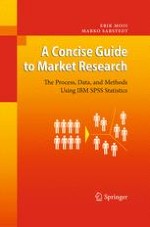2011 | OriginalPaper | Buchkapitel
5. Descriptive Statistics
verfasst von : Erik Mooi, Marko Sarstedt
Erschienen in: A Concise Guide to Market Research
Verlag: Springer Berlin Heidelberg
Aktivieren Sie unsere intelligente Suche, um passende Fachinhalte oder Patente zu finden.
Wählen Sie Textabschnitte aus um mit Künstlicher Intelligenz passenden Patente zu finden. powered by
Markieren Sie Textabschnitte, um KI-gestützt weitere passende Inhalte zu finden. powered by
